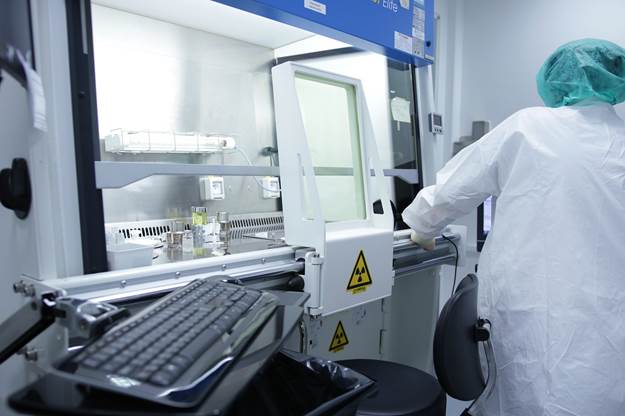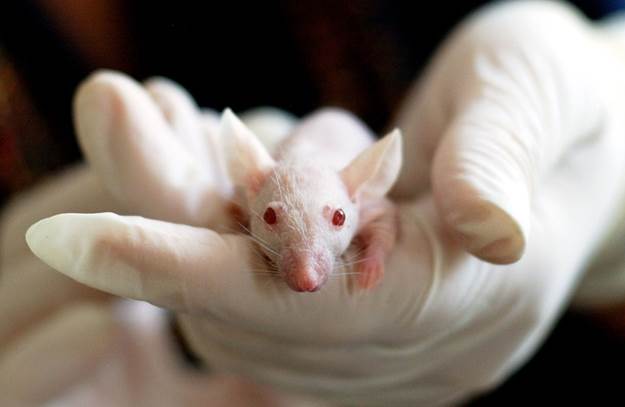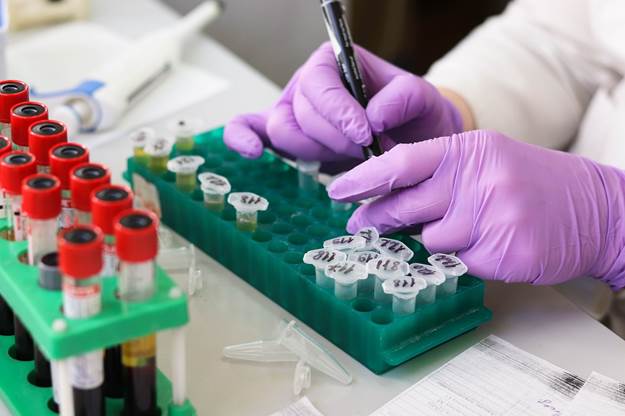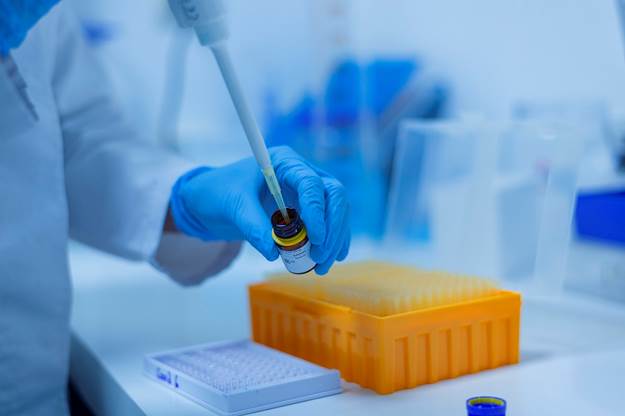The Beginner's Guide To Antibody Sequencing
Nov 3rd 2022

Contemporary cell biology and biochemistry rely heavily on commercial research antibodies. In the United States, approximately $2 billion is spent annually on them, although many appear ineffective, which may contribute to the "reproducibility crisis" in biological sciences.
In this blog, we'll review the basics of antibody sequencing, how it has expanded, and, importantly, the various traditional and modern techniques used in sequencing antibodies, their production, peptide synthesis, antibody sequence alignment tools, and many more.
So let's begin from the top.
What is Antibody Sequencing?
Antibodies are essential components of the immune system, combating infection and sickness to keep the body safe. Numerous applications, notably antibody engineering, database banking, function optimization, and finding new antibody clones, make it crucial to look into the genetic makeup of such proteins and understand their sequencing.
But what precisely is antibody sequencing?
Antibody protein sequencing is just figuring out the order of the amino acids in an unidentified antibody. On the commercial scale, antibody sequencing services provide this service to researchers and organizations in the biochemical field.
What Are Antibody Sequencing Services?

An Antibody sequencing service tries to figure out the sequence of amino acids in any antibody, whether it's polyclonal, monoclonal from a hybridoma, recombinant, or humanized. The pharmaceutical industry's development of antibodies benefits greatly from this use. Mass spectrometry is the method of choice for sequencing proteins these days, and this method may support sequencing from beginning to end.
It guarantees a high degree of accuracy and enables sequencing without having the DNA sequence in advance. Antibodies contaminated or conjugated can also be sequenced, and the results obtained through this mechanism of antibody production and sequencing are usually rather precise.
In other words, there is more than one way to sequence the proteins in an unknown antibody, and you can continue reading to learn them below.
But first, let's look at tools used in aligning the sequences of known antibodies.
What are the Various Antibody Sequence Alignment Tools?
In therapeutic development, antibody sequences are essential for the engineering of antibodies and the characterization of proteins. The ability to perform sequence analysis/alignment provides users of antibody reagents with crucial information for determining binding and cross-reactivity, a prerequisite for logical experiment design.
Numerous online antibody databases are available to keep various data types, including suppliers, usage statistics, and publication citations. For the sake of reproducibility, these kinds of antibody databases are frequently employed. However, additional databases, including sequences from immunoglobulin genes or antibody proteins, provide far more knowledge for antibody engineering and characterization.
It is sometimes necessary to employ an antibody sequence alignment tool or de novo protein sequencing to decipher a genome sequence that has yet to be sequenced. However, when the sequence is known, researchers can use one of the many databases of antibody sequences to find the sequence.
Here are some of the leading antibody Sequence Databases.
IMGT
The international ImMunoGeneTics information system, also known as IMGT, is a high-quality integrated knowledge resource that serves as a global reference. It specializes in the immunoglobulins (Ig), T cell Receptors (TcR), and Major Histocompatibility Complex (MHC) molecules that are found in humans and other vertebrates.
This database comprises even archives covering antibody sequencing, genome, and structure. For instance, IMGT's monoclonal antibodies database (I MGT/mAb-DB) is a one-of-a-kind, expert-reviewed resource for information on mAbs (monoclonal antibodies) that have been used in clinical settings as well as fusion proteins that have been used in immune-related research (FPIA).
abYsis

abYsis is an online platform for antibody research that features a centralized repository for sequence and structural information about antibodies. There are three main applications for abYsis:
For performing a database search to discover details about sequences (and structures), such as thorough annotations, the location of odd residues, post-translational modification sites, etc.
To examine consistent patterns throughout the sequences in the database and to enter one's sequences for further analysis.
UniProt
UniProt is among the most extensive, highest quality, and readily available databases of protein sequence and functional information. Since antibodies are not the primary focus of UniProt, the database only contains a representative sample of germline antibody sequences and a small number of non-germline antibody sequences.
cAb-Rep
cAb-Rep is a database of carefully selected antibody repertoires. It consists of 306 B cell repertoires gathered from 121 human donors, including healthy, immunized, and autoimmune disease volunteers. The database now stores 267.9 million curated full-length V(D)J light chain transcripts and 72.9 million full-length V(D)J light chain transcripts generated through Illumina sequencing technology.
SabDab
The SabDab Structural Antibody Database, often known as SAbDab, is a database that contains all of the antibody structures that are currently available in the PDB. Additionally, all of these structures are annotated and presented standardized.
These characteristics, in addition to structural factors like complementarity defining area loop conformation and changeable domain orientation, can be used by the user to narrow the search for a suitable structure.
TheraSabDab
The Therapeutic Structural Antibody Database (Thera-SAbDab) keeps tabs on all WHO-recognized antibody and nanobody therapies and finds any matching structures in SAbDab with nearly- or exact-sequence matches in the variable domain.
ABCD Database
The ABCD Database, introduced in 2020, is a collection of sequenced antibodies that includes cross-links to regulated chemical and protein structures databases and curated information on the antibody and its antigen. To improve experiment reproducibility, each antibody is given a specific ID number for use in scholarly publications.
Observed Antibody Space Database
An initiative called OAS aims to gather and annotate immune repertoires for use in the extensive analysis. It now has nearly one billion sequences from 79 independent researchers. These repertoires encompass various immunological states, creatures (most notably humans and mice), and individuals. Both paired and unpaired antibody sequences are currently present in OAS.
AHo's Amazing Atlas of Antibody Anatomy

AAAAA is a tool for analyzing, modeling, and building the structure of antibodies. AAAAA uses the same numeric notation for the original germline sequence and the rearranged sequences containing the variable domain. Users can run their antibody sequences through AAAAA to look for implausible alterations, including missing or duplicate residues, frameshifts, insertions, or deletions.
An issue that frequently arises is a need for more available sequences. Due to proprietary concerns and the fact that many genomes have yet to be sequenced, the public does not have access to the sequences of most antibodies used in industry. Furthermore, because immune systems are always evolving, global antibody research activities continuously produce novel antibodies that still need to be added to any database.
In such circumstances, researchers use a variety of approaches to sequence the antibodies.
What are The Various Antibody Production Steps?
Generally speaking, the techniques for sequencing antibodies can be broken down into two main categories, namely:
Traditional, Small-Scale Antibody Sequencing Methods
Sanger sequencing
Small-scale Sanger sequencing was one of the earliest techniques to determine antibodies' nucleic acid sequence. During the Sanger sequencing process, the sample DNA is separated into four different vials containing all four deoxynucleotides and DNA polymerase.
As the DNA in each vial is copied, modified labeled di-deoxynucleoside triphosphates (ddNTPs) are added to stop the DNA from getting longer. Each vial is given a unique ddNTP, which causes the sequencing to halt at a distinct nucleotide. After the produced fragments have been split by electrophoresis, the relative positions of each line can help determine the DNA sequence.
This technique has been applied in various fields, including antibody research, and was utilized in 2003 by the Human Genome Project to sequence the first complete human genome. However, this approach has its drawbacks because it is labor-intensive, slow, and prone to mistakes. Modern strategies have been created; as a result to increase sequencing's throughput and dependability.
Modern, Large-scale Antibody Sequencing Methods
Modern " next-generation sequencing" techniques have made it possible to determine the DNA nucleic acid sequence. Utilizing fluorescently tagged dNTPs expedites the simultaneous sequencing of thousands of fragments in parallel. There are four stages:
- Library preparation
To make the DNA sample more manageable, adapters are tacked onto both ends of the fragments.
- Cluster amplification
Multiplying fragments by first hybridizing them to the surface of the flow cell is possible.
- Sequencing
After adding the necessary reagents to the sample, the sequencing process can begin. The incorporation of fluorescently tagged antibodies causes emissions at particular wavelengths.
- Analysis
Bioinformatics programs use the collected data to infer the DNA sequence.
Hybrido Sequencing
This method involves sequencing the cDNA for the hybridoma cell line's variable heavy and variable light (VH and VL) domains. This established approach is the most economical as long as the cell line that secretes the desired antibody is accessible.
Edman Sequencing
The Edman sequencing approach is a potential alternative method for determining the peptide sequence of antibodies. This method relies on the iterative removal of a single amino acid, its subsequent identification, and the subsequent removal of another amino acid. However, this approach is relatively slow and exceedingly error-prone.
De novo Sequencing
De novo peptide sequencing is an alternative method that can be used to determine the amino acid sequence of an antibody. This method is used in place of sequencing the nucleic acids.
First, the sequence is broken up into pieces, and then tandem mass spectrometry is used to find the mass-to-charge ratio of each piece. Using bioinformatics software that recognizes overlapping sequences, the fragments can be discovered and rebuilt into a single complete sequence.
Benefits of De novo Sequencing
The following are some of the advantages of performing de novo sequencing on an antibody:
I. End-To-End Antibody Sequencing
Using proprietary software for de novo sequencing of the antibody and high-resolution mass spectrometry with optimum settings, it is possible to sequence the entire protein, from the N-term to the C-term, leaving out no amino acid.
II. Multiple Applications
Aside from humans, the mass spectrometry-based approach can sequence antibodies of any class, including IgA, IgM, IgG, IgY, Fab, ScFv, and so on, from any animal species. It has also been used to sequence antibodies that are polluted, conjugated, or contain two distinct light chains.
III. Superior Accuracy
Strong signal peak patterns acquired from several mass spectrometry readings of distinct peptides allow for accurately identifying each amino acid in the sequence.
IV. Antibody Reproduction Without the Producer Cell
Even if the hybridoma that initially produced a custom antibody is no longer accessible, the antibody can be re-created from as little as 0.2 mg of monoclonal antibody protein through recombination. Other methods are still feasible if even this amount of protein is unavailable.
Peptide Mapping and Intact Mass Analysis

These instruments cannot replace mass spectrometric antibody sequencing, but they can verify the accuracy of the identified antibody protein sequences. If the molecular weight of the protein is the same as what was observed experimentally, then the intact mass analysis is successful.
Peptide mapping tells you if the precursor peptides are what you thought they would be. These methods aren't helpful for sequencing in and of themselves because of their limitations and inability to identify specific amino acids.
To further understand these complex structures, especially why and how they function, it's necessary to take a few steps back and understand antibody production.
What is Antibody Production?
In a broad sense, antibody production steps refer to all of the procedures involved in producing a usable specific antibody, such as preparing the immunogen, immunizing the subject, developing a hybridoma, collecting samples, screening them, isotyping them, purifying them, and labeling them for immediate use in a particular procedure.
In a more limited sense, antibody production refers to gene synthesis or peptide synthesis using different techniques; it does not, however, encompass various methods of purifying and tagging the antibody for specific applications.
Antibody Concentration
Estimating the number of antibodies can be done with a general protein assay or a method specific to the species and immunoglobulins, such as with specialized microagglutination assay kits.
The titer is linked to concentration but more particularly to the effective potency of a particular antibody sample. Titer measurement typically entails figuring out the appropriate dilution of an antibody sample required for detection in a specific experiment, like those involving ELISA kits.
Conclusion
There are many challenges in custom protein synthesis and antibody sequencing. Insufficient user awareness, poor antibody validation and characterization, and occasionally poor supplier performance from antibody and recombinant protein production services have all resulted in significant financial and personal expenses. Therefore, it's up to you to research your options and choose the best antibody provider on the market.

